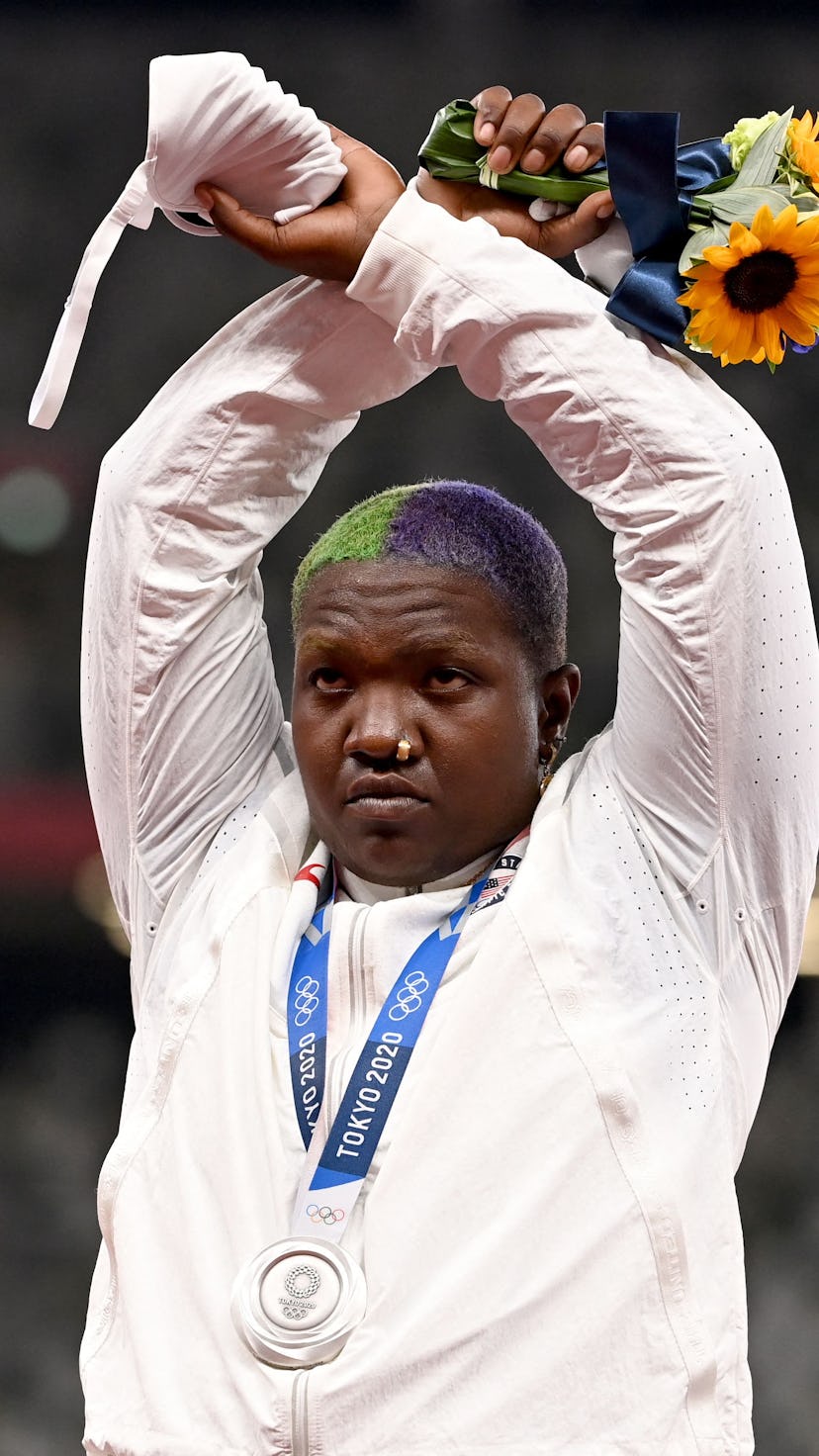Celebrity
8 Powerful Athlete Protests In Olympics History
From Raven Saunders to Gwen Berry, these pros took a stand for what they believe in.

BEHROUZ MEHRI/AFP/Getty Images
Rule 50 of the Olympic Charter states that “no kind of demonstration or political, religious, or racial propaganda is permitted in any Olympic sites, venues, or other areas.” If violated, athletes face fines, suspensions, and potentially expulsion from the games.
Mike Egerton - PA Images/PA Images/Getty Images
In July 2021, the IOC revealed that athletes may protest “prior to the start of the competition” in mixed zones, interviews, and during press conferences, but not on the podium, per NBC.
Ryan Pierse/Getty Images Sport/Getty Images
Shot put star Raven Saunders formed an “X” with her arms on the podium after winning silver at the Tokyo 2020 Olympics. She told CNN it represented “the intersection of where all people who are oppressed meet.” After Saunders’ mother died, the IOC suspended their investigation of the event.
Elsa/Getty Images Sport/Getty Images
U.S. fencer Race Imboden wore an “X” on his hand while on the podium of the men’s team foil event in Tokyo, which he called “a symbol of solidarity.” He tweeted that he chose to protest in “support of athletes of color, ending gun violence, and all the athletes and who wish to use their voice on the platform they’ve earned.”
elzauer/Moment/Getty Images
Peter O’Connor protested at the 1906 Olympics. Despite being from Ireland, he was required to represent Great Britain at the games. During an award ceremony, the Irish athlete protested by scaling a flagpole, removing the British flag, and waving an Irish one instead.
Steph Chambers/Getty Images Sport/Getty Images
U.S. hammer thrower Gwen Berry raised her fist in the air before the Tokyo final, stating she was “protesting social and racial injustice,” per CNN. As the demonstration was held prior to the start of the event, she was allowed to protest.
NCAA Photos/NCAA Photos/Getty Images
Tommie Smith and John Carlos are known for their historic protest at the 1968 Olympics. The athletes, who won gold and bronze at the 200m running event, raised their fists in the air on the podium to stand up against racial inequality. As a result, they were expelled from the games.
Bettmann/Bettmann/Getty Images
Australian silver medalist Peter Norman made his own statement in solidarity with Smith and Carlos on the podium by wearing an Olympic Project for Human Rights badge on his chest. His protest marked the end of his Olympic career.
Tim Clayton - Corbis/Corbis Sport/Getty Images
The U.S. women’s soccer team is just one of many to take a knee at the Tokyo Olympics this year. Other teams — including Great Britain, Chile, New Zealand, and Sweden — similarly joined together to protest against racism and discrimination before their matches.